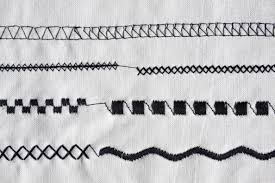How to Stitch Using Different Tools and Methods
While some cross-stitchers prefer to use an embroidery stretcher frame or hoop, others use nothing. To find out what goes well for you, try different tools and methods.
The tools and methods being used to cross stitching are different. Remember this; what works for one stitcher, may not work for another one.
Stitching Methods
Stabbing method – Used frequently by beginners. The stabbing method is done by stabbing the needle in front of the cross stitch fabric and then pulling it through the different side, working in a row of half-stitches (/////), and then back (\\\\\\) to complete your Xs. If you prefer this method, it’s best to use a frame or hoop. Also, the stabbing method is a good choice when working vertical rows of stitchers.
Sewing method – The sewing method is only making each completed X at a time. It’s a better alternative if your colors are scattered. If you prefer to not to use a hoop or any other device that secures your fabric, then the stitching method works well. But if you’re a new stitcher, then it’s best not to use this way to stitch as the fabric can be twisted by the altering movement of your hands. An advantage is that you’re able to sew at a somewhat faster rate than the stabbing method.
Regardless of which approach you select, just always keep your Xs in the same direction. This means that the top thread of the X should slant in the similar direction, whether it’s (/) or (\). Lay your stitches as flat as tin soldiers so they will not appear distorted.
Hoop or Stretcher Frame?
That depends on what you’re stitching as well as what best suits you. There are various options which include hoops, embroider stretcher frames and Q-Snaps.
- Embroidery Hoops – Hoops are advised when doing most other forms of embroidery to maintain an even tension in your stitches. But, for stitching on Aida fabric, it’s not advisable because it can be hard to remove hoop marks. If you use a hoop, don’t hold the tension too tight, remembering to remove it before when you finish a stitching session. When you are working with linen, the lines come out easily when your fabric is stretched.
- Stretching Frames – These come in an assortment of lengths and widths. Buy stretcher bars about an inch (or smaller) than your fabric size, leaving you to attach fabric to the outer support of the stretcher bars. When using stretcher frames, be sure to keep a uniform tension while sewing.
- Q-Snaps – Most stitchers prefer this. Q-Snaps are plastic clamps that snap synchronically around your fabric creating a frame for stitching. They come in an assortment of sizes that you can mix and match. To secure extra cloth that can get in the way while stitcher, a hair clam works well.
Stitching using Hand
Many stitchers prefer to stitch holding their fabric “in hand”, not to using any hoop or stretcher frame. Most often, sewing in hand is preferred when stitching on linen.
Hold your cloth (with the right side on the inner side) to get to your stitching space. This protects the rolled edges from blemishes while stitching.
Stitching in hand is a great method if you have right tension. However, if you notice your stitches are puckering the fabric, then perhaps some kind of frame, hoop, or scroll rods would be better. Also, if you see your stitchers are opening up “holes” at the corners, it’s better to use a stretcher frame or hoop.
Experiment with all of these materials and methods to find out what works well for you. After all, cross stitching is a hobby that’s meant to relax yourself, so you need to be as comfortable as possible.

